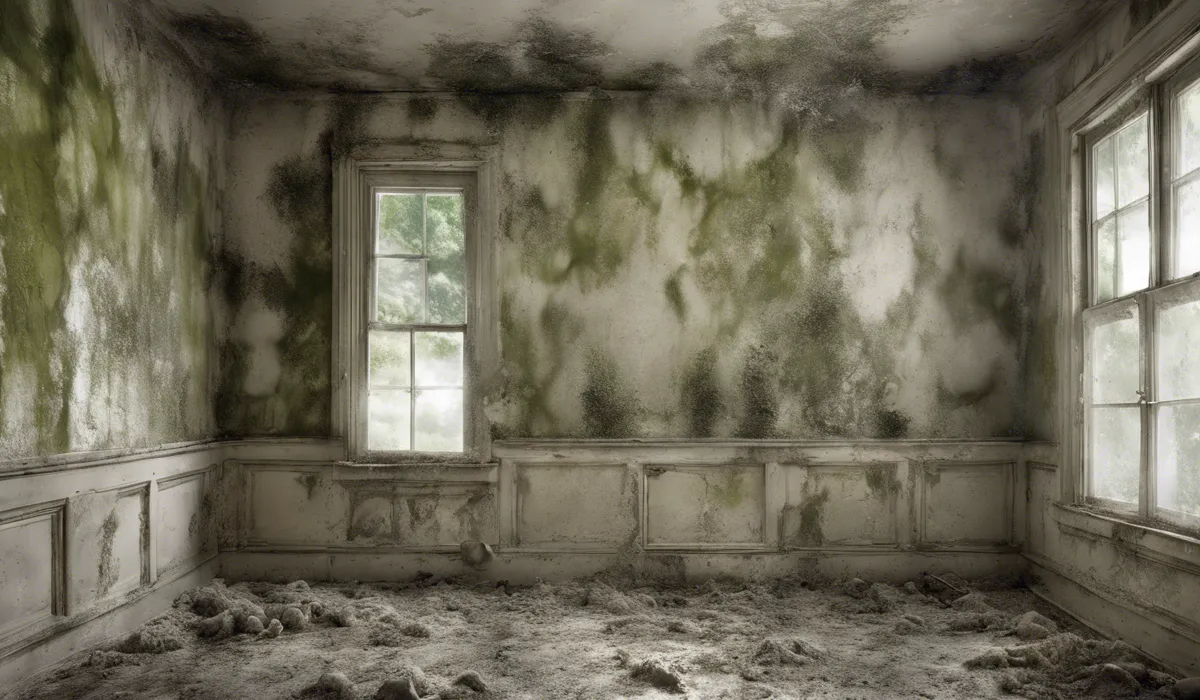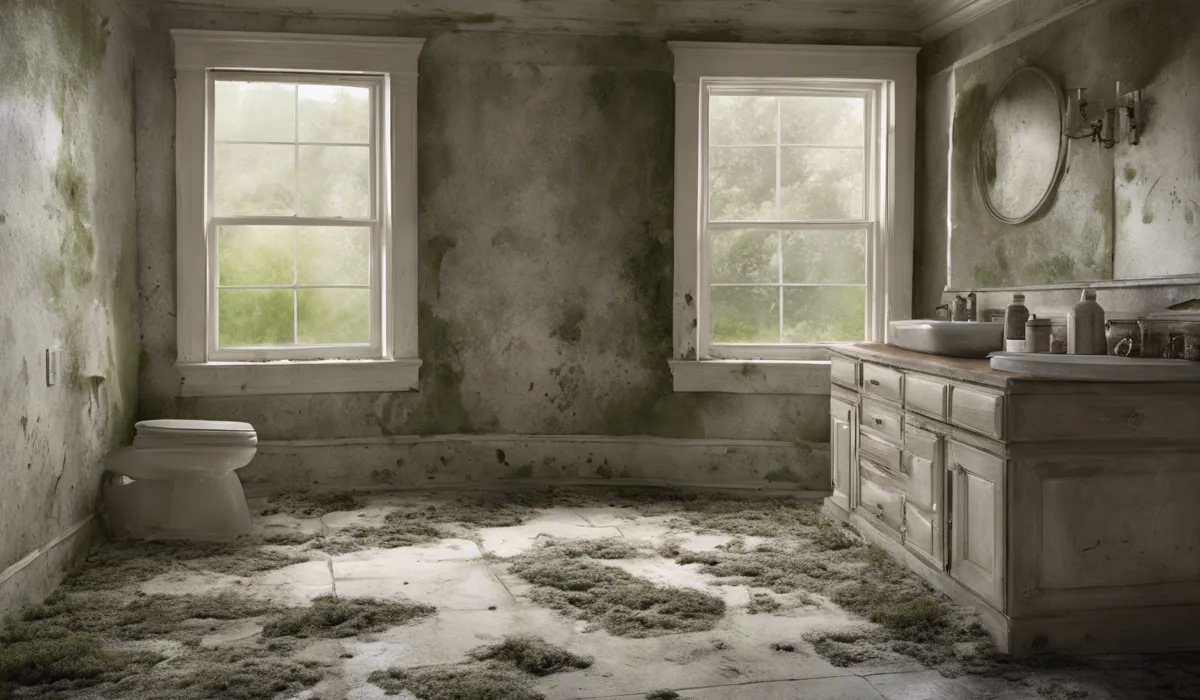Not all homes have mold, but mold spores are ubiquitous in the environment, and they can grow in homes when conditions are right—namely, when there is moisture, warmth, and organic material present. Regular maintenance can help prevent mold growth.
The Prevalence of Mold in Homes

Understanding Mold and Its Growth Cycle
Mold is a type of fungus that thrives in moist environments. It reproduces by releasing tiny spores that travel through the air.
When these spores land on damp spots inside your home, they can start to grow. Molds can grow on almost any substance, as long as moisture and oxygen are present.
They come in various colors and can smell musty.
Common Conditions for Mold Growth
In homes, mold commonly grows in places where there is excess moisture. This can come from leaky roofs, windows, or pipes, or from areas that have been flooded.
High humidity levels, particularly in places like basements, attics, and bathrooms, also promote mold growth.
Homes with poor ventilation can trap moisture, creating an ideal environment for mold to multiply.
Statistics on Mold Presence in Homes
Studies have shown that mold is found in a significant number of homes. While not all homes have visible mold, spores are almost always present in the indoor environment.
The actual growth of mold can depend on several factors, including how well a home is maintained and the climate in which it is located.
Mold Variability by Location and Climate
Location and climate play a key role in mold presence. Homes in humid climates or areas with frequent rainfall are more likely to experience mold issues.
Similarly, homes located near bodies of water may also have higher humidity levels that can lead to mold growth.
Comparing Mold in New Construction to Older Homes
New homes can have mold if the building materials were exposed to moisture during construction.
On the other hand, older homes may have longstanding water damage or leaks that contribute to mold growth. Both scenarios require attention to prevent and address mold issues.
Types of Mold Found in Homes

Common Indoor Molds
Some of the most common types of mold found indoors include Cladosporium, Penicillium, Aspergillus, and Stachybotrys, often referred to as “black mold.”
These molds can appear in different colors and textures, from green and black to white and fuzzy.
Health Risks of Indoor Molds
Different molds can pose various health risks, ranging from allergic reactions to respiratory issues.
Prolonged exposure to mold can lead to more serious health problems, especially for individuals with preexisting conditions like asthma or weakened immune systems.
Where Mold Grows in Homes?
Mold often grows in damp, warm, and poorly ventilated areas. Bathrooms, basements, and under sinks are typical mold-prone areas.
Materials like drywall, carpet, and wood provide food for mold when they become wet.
Entry and Thriving of Mold Spores
Mold spores enter homes through doors, windows, and HVAC systems. They can also attach to clothing and pets.
Once inside, they thrive in moist environments where there is organic material to feed on.
Preventing and Addressing Mold in Your Home

Effective Strategies to Prevent Mold
Preventing mold begins with controlling moisture levels. Use dehumidifiers, fix leaks promptly, and ensure that your home is well-insulated and ventilated.
Regularly cleaning and drying wet areas will also deter mold growth.
Moisture Control and Ventilation
Maintaining low moisture levels and good airflow is vital in preventing mold. Use exhaust fans in bathrooms and kitchens, and open windows when weather permits to promote ventilation.
Keeping gutters and downspouts clean ensures proper water drainage away from your home’s foundation.
Cleaning and Maintenance of Mold-Prone Areas
Regular cleaning of areas prone to moisture can prevent mold growth.
This includes scrubbing bathrooms, checking under sinks for leaks, and drying any wet areas immediately. Use mold-resistant products in high-moisture areas for added protection.
Seeking Professional Mold Inspection and Removal
If you suspect a serious mold problem, it’s best to call a professional. They have the tools and expertise to assess the situation accurately and provide the necessary remediation.
Professional removal is especially important if you have a large area of mold or if toxic mold is present.
Long-Term Solutions for a Mold-Free Home
For a long-term solution, address any underlying issues that contribute to moisture in your home.
This may include improving your home’s insulation, installing proper ventilation systems, and using moisture-resistant building materials during renovations or repairs.
FAQs About Mold in Homes
Do all homes have mold?
Not all homes have mold, but since mold spores are found almost everywhere in the environment, they can exist in homes under the right conditions.
Can mold grow in any home?
Yes, mold can grow in any home if there is sufficient moisture, warmth, and organic material for it to feed on.
What conditions promote mold growth in homes?
Mold growth in homes is promoted by high humidity, warm temperatures, and the presence of organic materials such as wood, paper, or fabric.
How can I prevent mold growth in my home?
Preventing mold growth in your home involves controlling moisture levels, fixing leaks, ensuring good ventilation, and performing regular maintenance.
Is it possible to completely eliminate mold spores in my home?
It is not possible to completely eliminate mold spores in the home since they are pervasive in the environment, but you can prevent them from growing into mold by controlling indoor conditions.
Final Thoughts
While mold spores are pervasive in the environment, not every home has mold growth. The development of mold in homes is contingent upon specific conditions such as moisture, warmth, and available organic material.
To combat mold proliferation, homeowners should engage in regular maintenance to keep these contributory factors in check.
